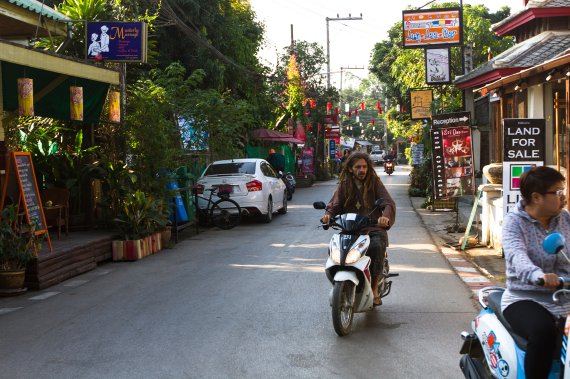The northern Thai village of Pai has three different reputations among tourists: as an outdoor activity centre, hippie place and romantic village.
Thailand drew 32 million holidaymakers last year, who accounted for around 20 percent of the country’s income. The village of Pai in the mountains of northern Thailand has attracted tourists since the 1970s. Initially, these were mainly people hiking in the mountains. Frome the 1980s there were more and more backpackers and the village became a hippie centre. Then in 2005, a romantic Thai film set in Pai led to the place being inundated by Thai couples who wanted to relive the film.
Pongajarn, who will obtain a doctorate for his work in the Cultural Geography chair group on 1 December, investigated the changes in this tourist destination by studying postcards sold in Pai by shops, hotels and restaurants. The images show how Pai’s story changed. He concludes that tourist destinations are forever evolving. ‘The development of tourist destinations is the result of exchanges between people, but also things.’ By which he means that the atmosphere and layout of a place is determined by the residents and business owners who shape the place and the tourists who come there, but also by physical objects such as the film that drew romantic couples to Pai or the quality of the access roads.
The three versions of Pai — an outdoor activity centre, a hippie spot and a romantic village — now all coexist, says Pongajarn, and are embedded in different networks. But the three are also conflict with one another in the spatial layout. Backpackers want cheap youth hostels made of bamboo while the romantic Thai visitors want hotels in an Italian style.
Investments in tourism often fail if they are not based on a proper understanding of the place’s story. That also applies to the state’s attempts to steer the development of tourist destinations in a different direction, says Pongajarn. For example, the authorities have been unable to stop the sex industry in the seaside resort of Pattaya. Pongajarn thinks that is because the ideal local conditions for sex tourism have not really been understood: powerful local operators running sex businesses, easy access to tropical beaches and large-scale migration of poor boys and girls from Bangkok.

